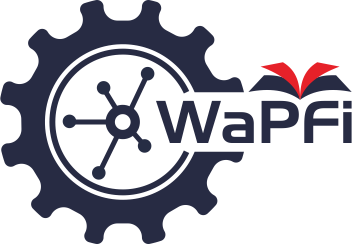Integrasi RUSLE Berbantuan GIS untuk analisis estimasi erosi tanah di kabupaten ciamis
Abstract
Indonesia is a country that is prone to erosion because it is in a tropical climate with relatively high rainfall intensity and is supported by hilly topographic conditions in most areas. This research aims to determine estimates of soil erosion using the GIS-assisted RUSLE method in the Ciamis district area. This method focuses on five Factors, namely Rainfall erodibility Factor (R), Soil erodibility Factor (K), Topographic Factor (LS), Cropping management Factor (C) and Practice support Factor (P). Based on the Morgan classification, the estimated results of soil erosion in the Ciamis district are classified as high erosion with the highest soil loss value being 33.9645 tons ha-1 year-1.
Downloads
References
Agele, D. M., Lihan, T. B., Rahim, S. A., & Rahman, Z. A. (2013). Risk assessment of soil erosion downstream of the Pahang river basin with RUSLE model. Research Gate, 19(2), 571–580.
Farhan, Y., & Nawaiseh, S. (2015). Spatial assessment of soil erosion risk using RUSLE and GIS techniques. Environmental Earth Sciences, 74(6), 4649–4669. https://doi.org/10.1007/s12665-015-4430-7
Firdaust, S. A., Kuryanto, T. D., & Manggala, A. S. (2023). Analisis Erosi Dan Sedimentasi Di Das Sampean Hulu Menggunakan Metode Usle Berbasis Sistem Informasi Geografis. Jurnal Smart Teknologi, 4(3), 320–327. http://jurnal.unmuhjember.ac.id/index.php/JST
Ganasri, B. P., & Ramesh, H. (2016). Assessment of soil erosion by RUSLE model using remote sensing and GIS - A case study of Nethravathi Basin. Geoscience Frontiers, 7(6), 953–961. https://doi.org/10.1016/j.gsf.2015.10.007
Ghosal, K., & Bhattacharya, S. Das. (2020). A Review of RUSLE Model. Journal of the Indian Society of Remote Sensing, 48(4), 689–707. https://doi.org/10.1007/s12524-019-01097-0
Hamida, F. N., & Widyasamratri, H. (2019). Risiko Kawasan Longsor Dalam Upaya Mitigasi Bencana Menggunakan Sistem Informasi Geografis. Pondasi, 24(1), 67. https://doi.org/10.30659/pondasi.v24i1.4997
Handayani, N., & Hartutik, S. (2021). Gambaran Kesiapsiagaan Masyarakat di Daerah Rawan Longsor. Aisyiyah Surakarta Journal of Nursing, 2(2), 61–69.
Hikmah, A. A., Subando, J., & Effendi, A. (2023). Internalisasi Nilai-Nilai Akhlak terhadap Alam pada Santri di Pondok Pesantren Muhammadiyah Green School Wonogiri Tahun Ajaran 2022/2023. Jurnal Ilmiah Hospitality, 12(1), 153–160.
Hudi, S. M., Yuwono, S. B., & ... (2022). Pendugaan erosi das sekampung hulu guna perencanaan rehabilitasi hutan dan lahan. … Nasional Silvikultur Ke-Viii, 213–219. https://hutan.fp.unila.ac.id/wp-content/uploads/2022/09/213-219_PROSIDING-SEMNAS-SVK-8-berISSN.pdf
Ilhami, M. F., & Yusuf, M. (2020). Optimasi Alokasi Penggunaan Lahan Berbasis Mitigasi Erosi. Jurnal Teknik ITS, 9(2). https://doi.org/10.12962/j23373539.v9i2.54995
Jahun, B. G., Ibrahim, R., Dlamini, N. S., & Musa, S. M. (2015). Review of Soil Erosion Assessment using RUSLE Model and GIS. Journal of Biology, Agriculture and Healthcare, 5(9), 36–47. www.iiste.org
Kebede, Y. S., Endalamaw, N. T., Sinshaw, B. G., & Atinkut, H. B. (2021). Modeling soil erosion using RUSLE and GIS at watershed level in the upper beles, Ethiopia. Environmental Challenges, 2(December 2020), 100009. https://doi.org/10.1016/j.envc.2020.100009
Lihan, T., Khodri, N. F., Mustapha, M. A., Ali Rahman, Z., & Idris, W. M. R. (2018). Soil erosion potential at Sungai Bilut catchment, Raub, Pahang using integration of RUSLE and GIS. Sains Malaysiana, 47(10), 2241–2249. https://doi.org/10.17576/jsm-2018-4710-01
Naryanto, H. S., & Zahro, Q. (2020). Penilaian Resiko Bencana Longsor di Wilayah Kabupaten Serang. Majalah Geografi Indonesia, 34(1), 1–10.
Nuraida, Rachman, L. M., & Baskoro, D. P. T. (2016). Analysis of High Conservation Value Aspect Erosion and Sedimentation Control (HCV 4.2) in Ciliwung Hulu Watershed. Journal of Natural Resources and Environmental Management, 6(2), 151–158. https://doi.org/10.19081/jpsl.2016.6.2.151
Nurjanah, S., & Mursalin, E. (2022). Pentingya Mitigasi Bencana Alam Longsor Lahan: Studi Persepsi Mahasiswa Siti Nurjanah 1 , Enggal Mursalin 2. Jurnal Basicedu, 6(1), 515–523.
Prihatin, R. B. (2018). Masyarakat Sadar Bencana: Pembelajaran dari Karo, Banjarnegara, dan Jepang. Aspirasi: Jurnal Masalah-Masalah Sosial, 9(2), 221–239. https://doi.org/10.46807/aspirasi.v9i2.1106
Ramadhani, N. I., & Idajati, H. (2017). Identification of the Landslide Hazard Level, Case Study: Mount Lawu Slope Area, Karanganyar Regency, Central Java. Jurnal Teknik ITS, 6(1), 87–90.
Rohimah, S., Ibrahim, I. M., & Samiatulmilaah, A. (2021). Pengetahuan Masyarakat Tentang Kesiapsiagaan Bencana Menghadapi Tanah Longsor Di Kabupaten Ciamis. Jurnal Keperawatan Galuh, 3(1), 11. https://doi.org/10.25157/jkg.v3i1.6582
Rosita, A., Aryanto, D., Noorainy, F., Slamet, M., & Permadi, D. (2018). Daerah Rawan Bencana Geologi Gerakan Tanah Dalam Arahan Kebijakan Mitigasi Kabupaten Ciamis. Jurnal Planologi Unpas, 5(1), 885. https://doi.org/10.23969/planologi.v5i1.927
Ryan, C., Dasmasela, C., Sembiring, I., Purnomo, H. D., Informasi, M. S., Kristen, U., & Wacana, S. (2020). Sistem Peringatan Dini Rawan Bencana Longsor Di Kota Ambon menggunakan IoT. 02, 220–227.
Sulaiman, M. E., Setiawan, H., Jalil, M., Purwadi, F., S, C. A., Brata, A. W., & Jufda, A. S. (2020). Analisis Penyebab Banjir di Kota Samarinda. Jurnal Geografi Gea, 20(1), 39–43. https://doi.org/10.17509/gea.v20i1.22021
Thapa, P. (2020). Spatial estimation of soil erosion using RUSLE modeling: a case study of Dolakha district, Nepal. Environmental Systems Research, 9(1). https://doi.org/10.1186/s40068-020-00177-2
Warsita, I., Permana, S., & Farida, I. (2016). Perancangan Dewatering Pada Konstruksi Basement (Studi Kasus Proyek Landmark Residence – Bandung). Jurnal Konstruksi, 12(1), 1–19. https://doi.org/10.33364/konstruksi/v.12-1.269
Zulfa, V. A., Widyasamratri, H., & Kautsary, J. (2022). Mitigasi Bencana Berdasarkan Tingkat Risiko Bencana Tanah Longsor. Jurnal Kajian Ruang, 2(2), 154. https://doi.org/10.30659/jkr.v2i2.26532






